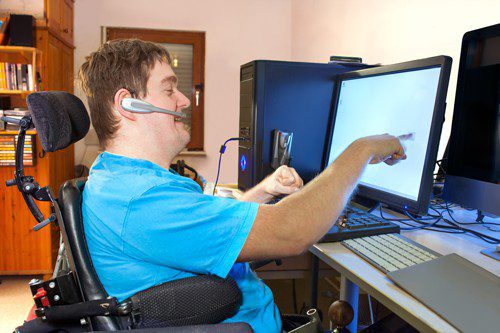
It is commonly thought that it is not possible to work and receive SSI and Medicaid benefits. Fortunately, this is not true but there are factors to consider.
The Supplemental Security Income (”SSI”) benefit (up to $841 per month in 2022) is available to individuals who have limited income, limited resources, and a disability severe enough that he or she is unable to earn an average of $1,350 a month (increased to $2,260 for statutorily blind individuals). For SSI there is no requirement of any previous work history, which distinguishes SSI from Social Security Disability Insurance (”SSDI”).
The most important factor to consider is finding the balance between employment and benefits which requires an understanding of the work incentives developed by the Social Security Administration (”SSA”). The primary resource for determining how work and earned income intersect with disability benefits (both SSI and SSDI) is the SSA’s Red Book ssa.gov/redbook/.
This guide outlines work incentive programs for individuals who want to start working or return to work, such as:
- Plan to Achieve Self-Support and Individual Development Accounts to set aside income or resources to meet expenses for achieving a work goal, like tuition and books;
- Ticket to Work, including free employment services to develop a plan to reach earnings-related milestones and outcomes;
- Continuation of Medicaid if earnings are too high for SSI but less than the state-specific threshold amount;
- Expedited Reinstatement of benefits if SSI ended due to earnings but then the individual is later unable to perform substantial gainful activity; and
- Work Incentive Liaison in the local Social Security offices to provide advice and information about the SSA incentives and outside organizations that serve individuals with disabilities.
An individual who receives SSI needs to know the SSA (1) disregards the first $65 earned in a month, and then (2) disregards one-half of the remaining earnings. Additionally, the SSA excludes “Impairment-Related Work Expenses” See the Red Book for the definition and examples.
For example, a person receives SSI of $841 per month in 2022, and her Medicaid benefit covers her case management, her wheelchair, and her personal and attendant care services, all of which are essential for her to live in the community. She has been offered a job, but she is concerned that any earned income would jeopardize her benefits, especially her Medicaid. There is no risk to the Medicaid benefit if she receives at least $1 of SSI income. (In
addition to the “$1 of SSI rule,” most states have adopted some version of the optional Medicaid Buy-In program, allowing individuals with disabilities who would otherwise be ineligible for Medicaid because of earnings to retain their Medicaid or buy it at low cost.)
She accepts the job and starts earning $1,065 per month which she reports to the SSA. The SSA will disregard the first $65 earned, leaving $1,000. To calculate her countable earned income, the SSA will divide $1,000 in half, leaving $500. The SSA will reduce her’s SSI by $500 and send her an SSI benefit of $341 each month. The Medicaid benefit is not at risk because she has at least $1 in SSI; she keeps her earned income of $1,065 plus $341 in SSI; and she enjoys the emotional and social benefits of having a job.
If her entry into the workforce is successful and she is paying FICA taxes into the Social Security system through her paychecks, she will start building a work history that eventually qualifies her for Social Security benefits and the associated Medicare benefit. In general, an individual must earn 20 work credits, although there is some variation based on age. In 2022, a worker must earn $1,510 to earn one work credit and can earn a maximum of four work credits each year. She will prove her work history to the SSA with each paycheck from which a small portion will be withdrawn for the FICA taxes. She will be able to check her record of earnings by setting up her
own account at ssa.gov/myaccount.
She will need to keep in touch with the SSA about her work activity, including if:
- She starts or stops working;
- Her duties, hours, or wages change; or
- She needs to pay expenses which allow her to keep working.
She should keep her pay stubs in case the SSA requires that she independently verify her earnings. She should also keep receipts for any impairment-related work expenses. And whenever she provides a report regarding her work, the SSA should give her a receipt that confirms she fulfilled her reporting obligation. It is important to keep those records as well.

